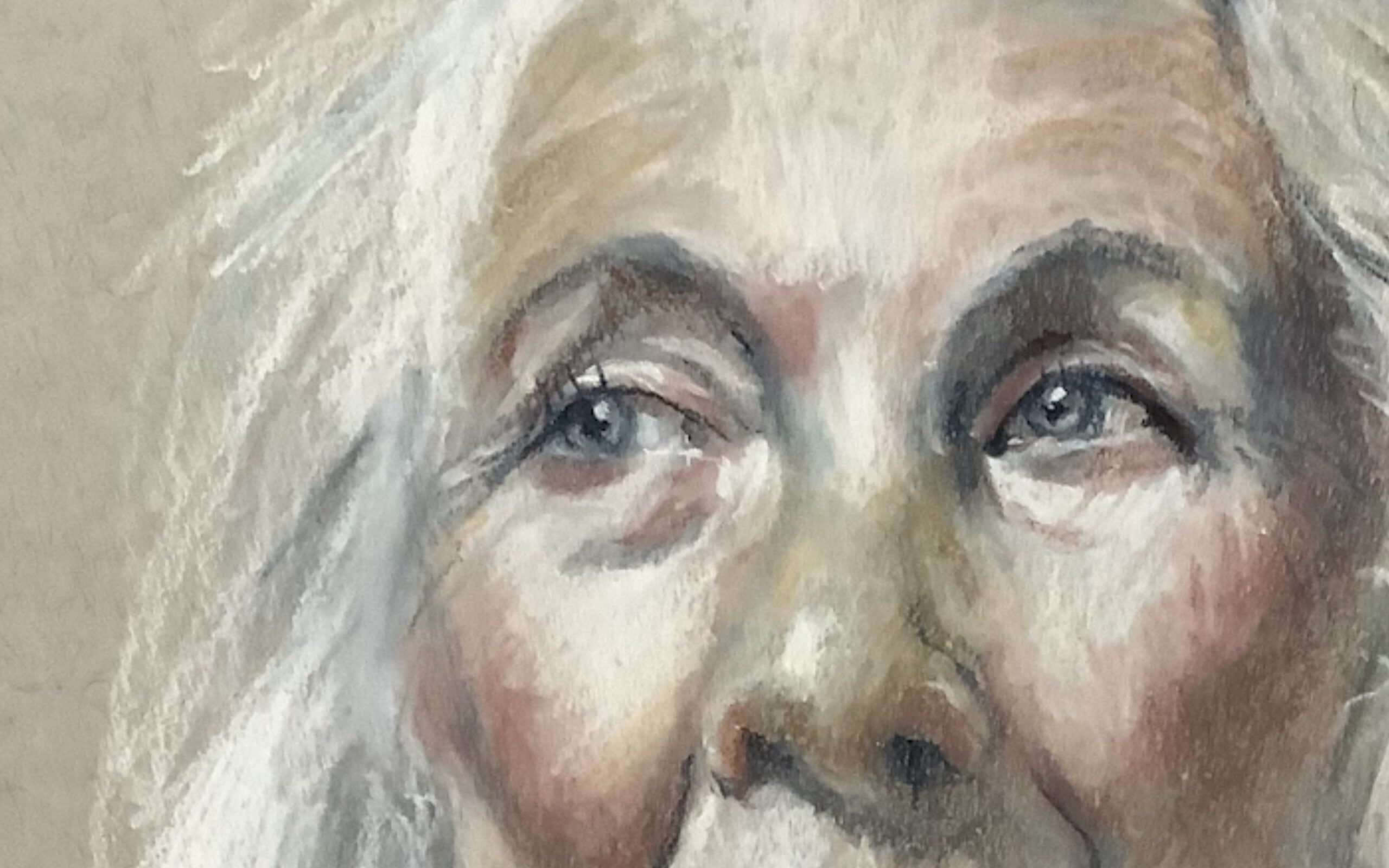
Customer story: From detail-focussed to vibrant and dynamic – how Jonathan Yeo brought new life to my portraits
Meet Vivienne, who took Jonathan Yeo’s course, Portrait Painting. We caught up with Vivienne to hear how she found the course, what she learned from it, and her advice for other aspiring painters.
Tell us a little bit about yourself…
I’ve been lucky enough to have had two working careers — one as an industrial chemist and the other as an HR Manager.
Art has always been an interest of mine. When my working life slowed down, I looked to my love of art as a third interest, but I never dreamed of it as a replacement for work or a career.
I’m now at a stage where I have more time to dedicate to art and more inspiration to do so. It’s become a profound joy to paint, research art, and learn more.
You’ve gotten up to some interesting projects in your creative time. How experienced are you as a painter?
There’s always been an art project to be involved in. I started with set design with designer friends, painting flats for various art groups, creating trompe-l’oeils, and murals for homeless hostels and, more recently, a commission for a local landscape, which eventually became a triptych.
I met a group of friends 30 years ago through watercolour classes. We joined the Wildlife Arts Society and eventually started our own West Country group.
I then became interested in portrait and figure drawing in 2019 and took life drawing and painting sessions with Raw Umber Studios.
I’m not terribly experienced, but I love the traditional atelier methods and art history, and I will always try to find out more (bulging bookcase already…).
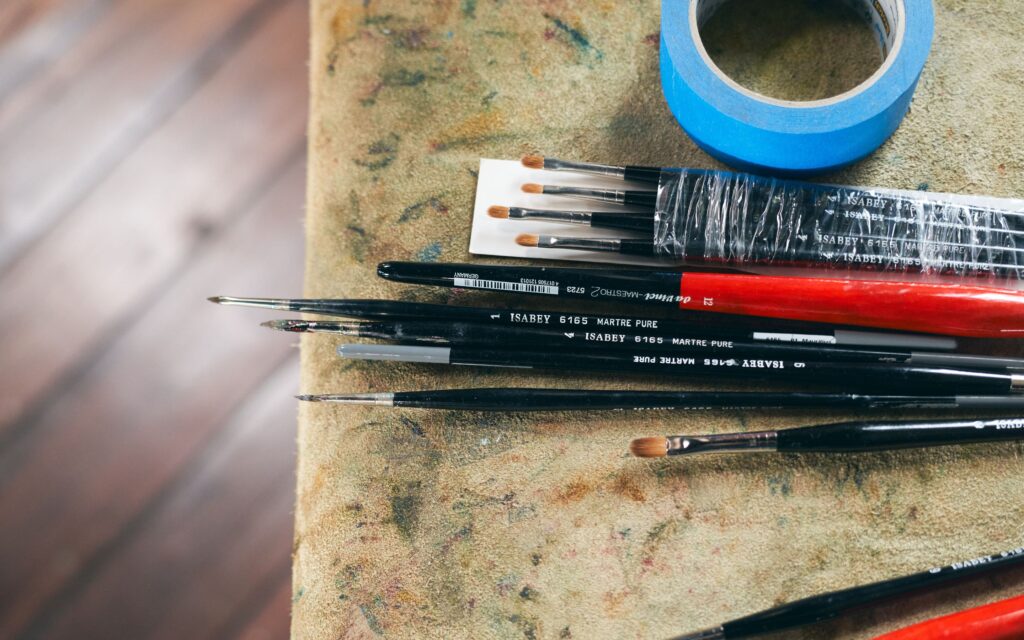
And what about your medium? What painting materials have you tried?
My watercolours have gone by the wayside now, but now and again, I do try them.
Oil painting started with landscapes for me. I live in a beautiful area, and with the advent of water-mixable oils — little mess and lighter on the brushes — I loved it. Acrylic paints were never tactile enough for me.
Once I started to get the hang of portraiture and figure drawing, oils were the natural next step. Doing Jonathan Yeo’s BBC Maestro course is part of developing that.
We, as amateur artists, rarely get a chance to see how an artist works.
Vivienne, artist.
How did you first hear about BBC Maestro? What drew you to Jonathan’s course?
I searched online for painting courses and found Jonathan Yeo’s course, Portait Painting. Few informational art courses are as inexpensive, and most want you to follow their style. I have no interest in creating a wide-ranging portfolio, installations, or video etc, just learning this skill.
I’ve always loved to capture fine detail in my paintings, but I felt like I was ready to try something new. Working more freely had been a goal of mine for a while, and I anticipated that Jonathan and his style of painting may teach me a thing or two.
I hadn’t heard of him but had seen some of his work online. I saw how unusually composed his paintings are and signed on immediately. I’ve always liked the BBC for its cultural element, so it seemed like a good choice.
What did you enjoy about watching Jonathan in his studio?
He has offered more than just his painting style, he’s given insights into his processes and methods, and his personal journey.
We, as art amateurs, rarely get a chance to see how an artist works, the studio set-up, the angle of the brush, the dibbing, rubbing out, and the stroking on, and this is invaluable.
This is what I get from the course, the richness and fullness of Jonathan’s observations, and more confidence to express my own observations.
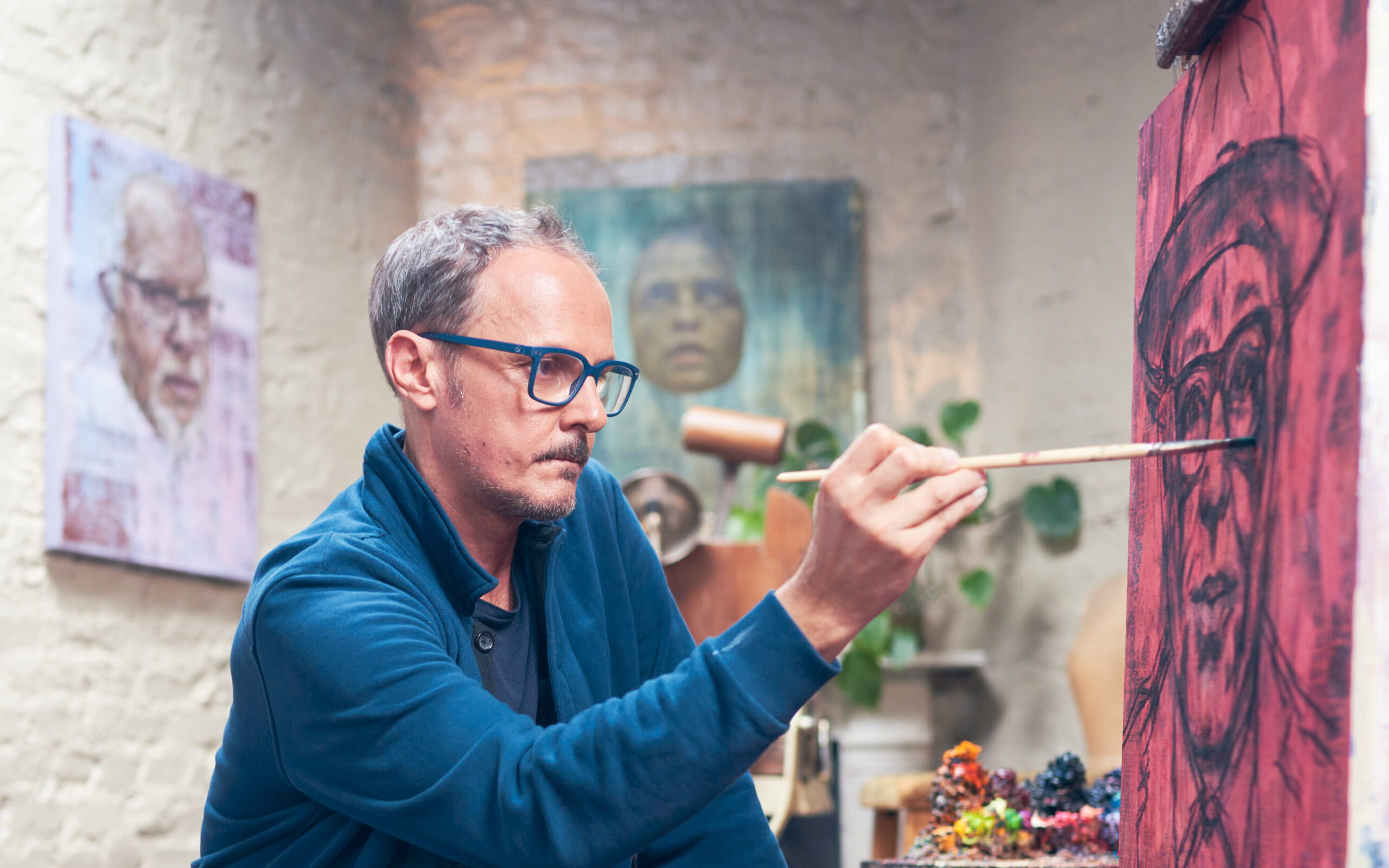
What were some of your learnings from Jonathan’s course?
If you have an open mind, little opportunities appear to you – Jonathan Yeo touched on it. It’s important to listen and take a chance. It might be a historical painting you’ve seen before, seeing it in a different light, or someone new to you, like Jonathan, who has a different view and different insights.
What he gave me was confidence in losing some of that detail. And confidence that what the spectator really wants is for you (the artist) to express what you saw and how you felt about it so that we can both share that moment of understanding, without all the dressing up.
Just one hour in the studio with someone like Jonathan would be inspiring. Fortunately, we have BBC Maestro.
Vivienne, artist.
Do you have any examples of your work since doing Jonathan’s course? If so, tell us a little bit about them and how his course may have impacted your approach.
I work desk easel size, rarely larger, as it takes a lot of time and paint, so most of these are A4.
The below 2 pictures are older drawings of gentleman models from sessions with Raw Umber, they take about an hour plus an extra hour to finish them off.
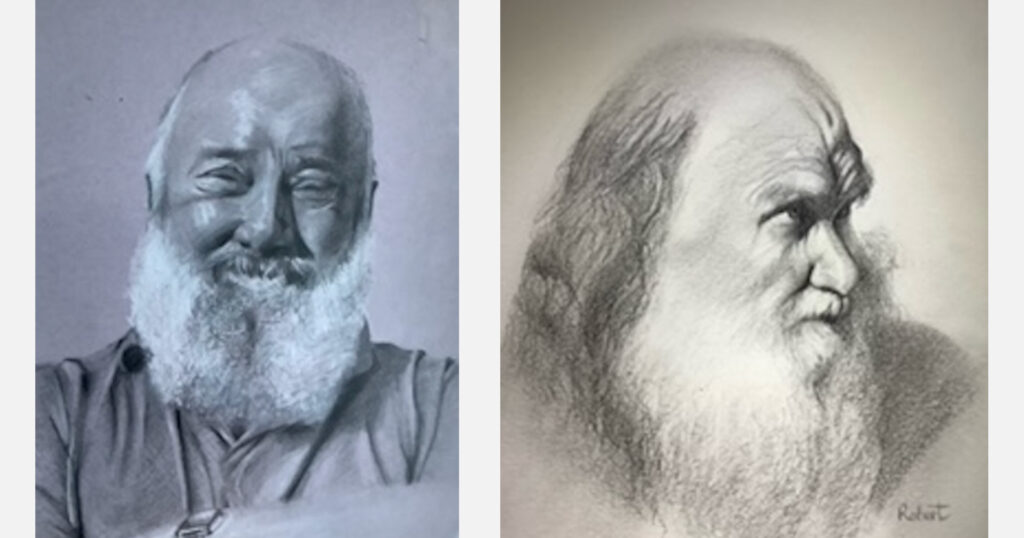
The next one is last year’s painting of King Charles. I did this in acrylics for a competition, and it is so tight and tensely painted. The 4th drawing however I’ve done since watching Jonathan Yeo, and feel it’s much more focused, expressive and better composed.
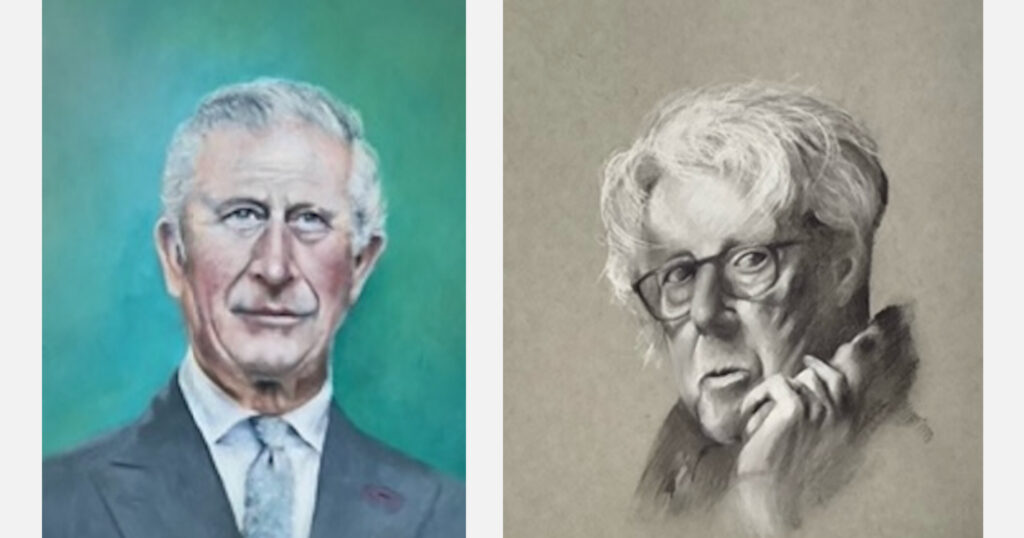
The next 2 pictures are of two more models with Raw Umber Studios, and I’ve used Pitt pastel, maybe some Nitram charcoal and graphite in small quantities.
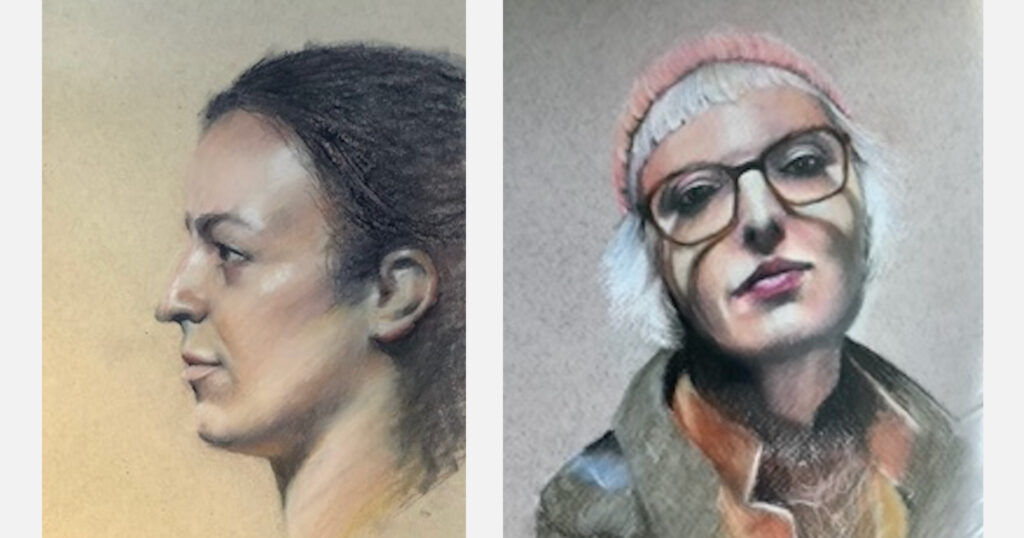
These next 2 drawings have been made since watching Jonathan’s course, and whilst they still need work, I think they hold themselves better in the painting space and are more dynamic.
My next steps are to take out the extreme blending, add my own backgrounds and start ‘tiling’ with the paint, as Jonathan does.
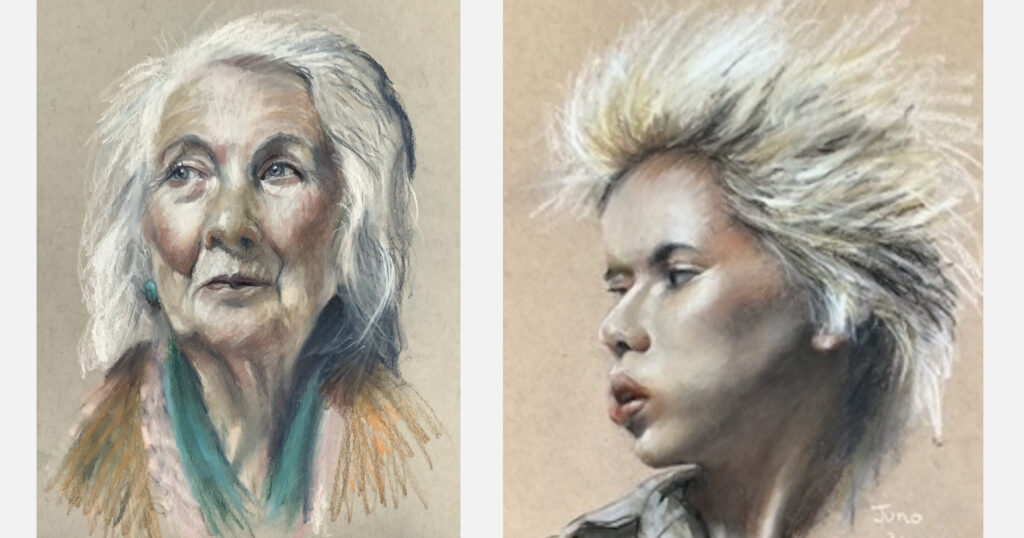
What would be your advice for other people starting their painting journey with Jonathan’s course?
Start at the end and watch his last lesson first. Whether you’re an aspiring painter – or you’re well-versed with a paintbrush, you’re likely a visual person. If you know what the end result could be, it makes starting out that much easier, and that bit more motivating to keep going.
I think artists are inherently problem solvers, so the challenge is to see what can be done and try to achieve it. And be hungry for more…just one hour in the studio with someone like Jonathan would be inspiring. Fortunately, we have BBC Maestro.
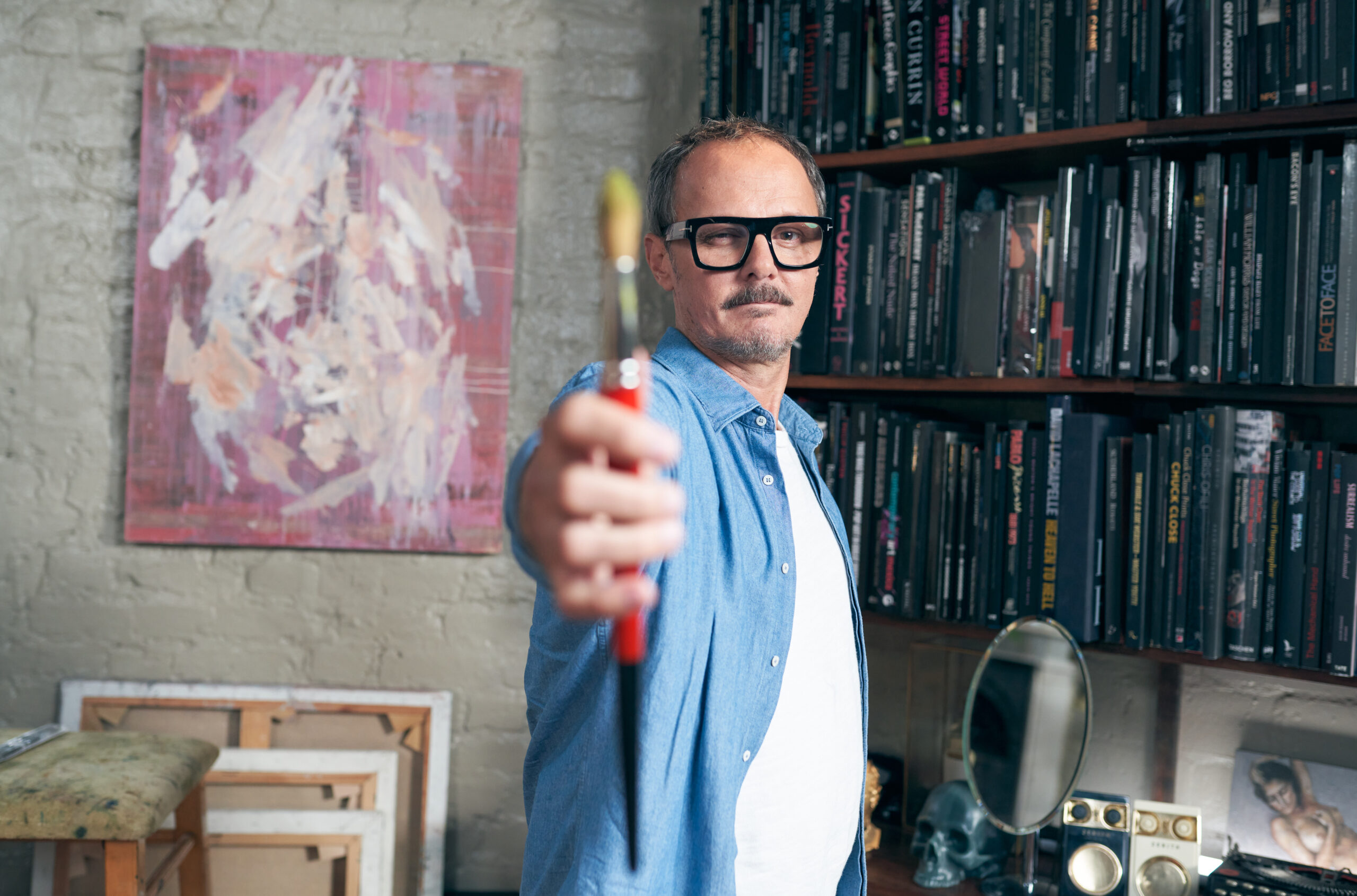
Learn more about painting
Learn to paint beautiful portraits with world-famous portrait artist, Jonathan Yeo. From achieving a likeness to choosing materials - he covers it all in his course








